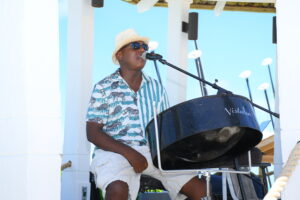Deandrea Hamilton
Editor
#TurksandCaicos, March 16, 2024 -Despite the desperate situation, no one is comfortable with ferrying hundreds of stranded tourists to nearby North Caicos to put them up in hotels after a dismal day at the country’s main airport; there are little to no rooms in Providenciales.
The Turks and Caicos Islands, one of the Caribbean’s most alluring destinations is plagued by an airport experience consistently delivering to it, a black-eye and on Saturday March 16 it was particularly ugly.
“For those of you waiting in inbound flight 855 JFK to TCI we have been diverted to Dominican Republic, DR. I will try to post if I get any info. Have a few drinks. It’s going to be a while, said Julie Desantis on Turks and Caicos Tourist Guide, a Facebook community page.
Deb Ballard, who said her delay was more than six hours added, “Airport here in TCI is unbearable. All the flights seem to be delayed, a thousand people in rooms built for a couple hundred. Trapped.”
There was reportedly also a flight from Philadelphia diverted to the DR.
And too numerous were reports of the frustration of travellers at the Providenciales International. Some, we were informed, were caught in explosive arguments while towing the chaotic, slow moving security checkpoint lines. As flights were being called, passengers tried to rush ahead of others who had been waiting and in some cases that led to verbal confrontations.
It’s the kind of last impression, travel destinations do anything they can to avoid.
We’ve learned there was no real help on the ground, in the terminal earlier in the day; however, by Saturday night, Josephine Connolly, the Minister of Tourism was at the airport vowing that no one would sleep at the facility.
“I will make sure that no one sleeps here. I am doing my best to accommodate everybody that why I am here, my PS is here and Mr. Smith is here from the airports authority,” said Connolly.
She was hoping to also run interference of negative publicity for the destination and its main airport but this action by her may be a courtesy coming a little too late. In the age of self-reporting, passengers were free to film, comment and convey whatever was their experience and disappointment and many did.
It is how residents became most acutely aware of the dire situation; social media posts by guests themselves who were trying to understand what was going on and what to do about it.
It’s anyone’s guess why the Providenciales International Airport (PLS) is an absolute mess today because up to now, there has been no statement, no explanation, no directives and no solution for the thousands of travellers impacted and the hundreds stuck at the airport with nowhere to stay.
Magnetic Media has fielded dozens of questions and comments and perspectives including a message shared with the Turks and Caicos Hotel and Tourism Association, TCHTA which explains as many as 200 guests were in dire need hotel accommodations for the night.
“We are looking for any property owners/villas that has vacancy and can accommodate these stranded guests. We are making calls to the hotels and for the most part most of the hotels are at 100% capacity.”
The surging tourism interest in the Turks and Caicos Islands is famously embraced; touted by government and industry stakeholders, and it’s been communicated that an overcrowded airport “is a good problem to have” on the way to fixing it.
But that message and the years’ long wait have become a vexing cocktail that even residents say they are tired of guzzling.
“…TCI can’t handle the volume of flights they schedule.”
The situation is so impossible, that there is serious – though admittedly, last resort – consideration for a ferry ride to shuttle the hundreds of travellers into another island, North Caicos, where there are guest rooms available. In the dark of night and with no real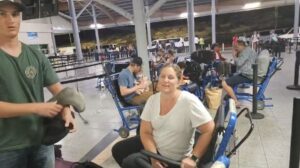 illumination on the water way, that idea of a 45-minute ferry for people tired and frustrated by cancelled travel plans is not gaining traction and will likely be nixed and will hopefully not be needed.
illumination on the water way, that idea of a 45-minute ferry for people tired and frustrated by cancelled travel plans is not gaining traction and will likely be nixed and will hopefully not be needed.
“I have a guest that left here after 12 noon and just contacted me 45-minutes ago and is asking my assistance for booking the hotels in Provo and getting them a taxi,” said a resort employee who is worried about his guests and wonders what is the problem at the airport.
Magnetic Media has reached out for a comment from the TCIAA, whose CEO has also been given the task of taking calls from vacation villa owners or resorts which have rooms for lodging; but there were no official statements up to publication time.
At midnight, there were mixed reports from guests. Some having been set up with a one night stay, others who had no clue what was next.
March is normally busy and the Turks and Caicos Islands Airports Authority, TCIAA which manages the country’s airports should have anticipated that, explained hotel workers and others in the industry who are concerned about their guests and clients.
“Private jets are affected because they’re not allowed to land between 12 and 3 in order to avoid creating even more air congestion, the Miami Center, which controls the space around us, reassigns take off times to private jets despite their intended time. So they are help up for sometimes, an entire day.”
Airline charter services are also skittish.
“…for fear they will get so delayed they will miss their next contract. So now we are starting to risk our most top end clients as well as airline passengers.”
And the Airports Authority is not having the best time of it either. Plagued with a wave of staff unrest which has led to some workers walking off the job, others taking industrial action and sudden terminations which are piled atop the infamous infrastructural dilemmas, it is clear any further delay on an immediate fix for the PLS will be detrimental to return guests and tourism on the whole.
“Three hours to get through the security line and then the delays,” explained a couple who are still at the Providenciales International though it is now minutes to midnight, adding, “So we have been here since 10:30 this morning and two of the people, the workers, they ran away from me. They just left. They just ran away, they were done!”
The guests are at the airport hoping for word on somewhere to rest their heads for the night. TCIAA security officers have told them, they cannot sleep at the airport though many of them speaking to our reporter on the scene were prepared to do so.
Celeste Wagner Russ, a visitor to the TCI said: “The airport desperately needs an expansion – for passengers. The space is mobbed, dirty and basically unhealthy for anyone. The ladies room on the upper level is worse than anything I’ve ever seen in Penn Station. The furniture is worn, dingy, and a very dismal welcome or departure. For the tremendous number of travellers to T and C, this airport is a disgrace.”
The TCIAA, last month revealed, it had a short list of companies who qualified to advance to the next phase of the bidding battle. The scope of work includes not only construction of an expanded airport, but management of it. The end may be in sight, but it is admittedly years away from fruition. An interim remedy for the PLS, is needed now.
“The congestions is exacerbated by no parallel taxiway. Which means an airplane can’t land and immediately get out of the way on the runway for the next guy to land because there is no parallel strip it could turn on to taxi to the terminal. So it takes twice as long to get each plane off the runway because they land, turn around and taxi back to the airport, where there may not actually be a parking space opened up for them yet.”
Residents in social media posts have called for flights into Providenciales to be spread out over the day; currently there is a bottleneck; commercial airlines are bunched up and landing at the strip almost one right after the other between noon and 3pm, while the mornings and evenings are like a graveyard.
Airlines have not wanted to change their schedules, and the fear is that any demand by the Turks and Caicos Islands could lead to destination Providenciales being dropped from the flight itineraries of the major air carriers.
Many have labelled that reasoning, given the phenomenal performance of tourism in the Turks and Caicos Islands, “a load of nonsense.”
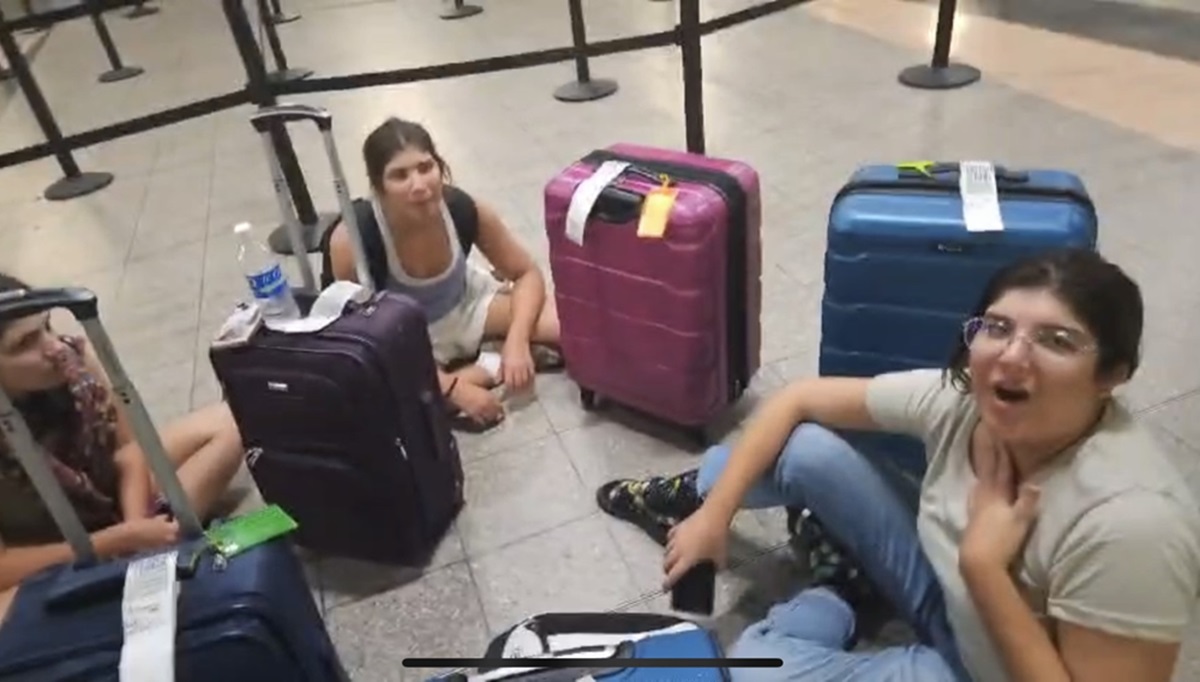

 Health1 week ago
Health1 week ago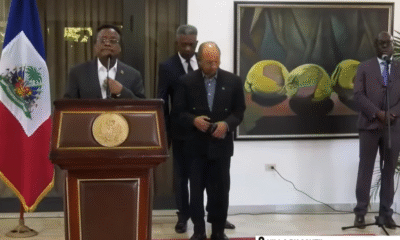
 world news1 week ago
world news1 week ago
 TCI News1 week ago
TCI News1 week ago
 TCI News1 week ago
TCI News1 week ago
 USA1 week ago
USA1 week ago
 TCI News1 day ago
TCI News1 day ago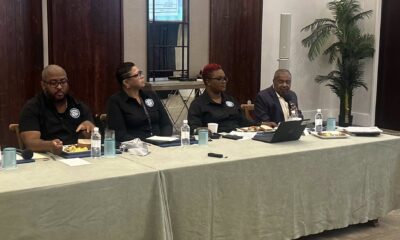
 TCI News3 hours ago
TCI News3 hours ago
















